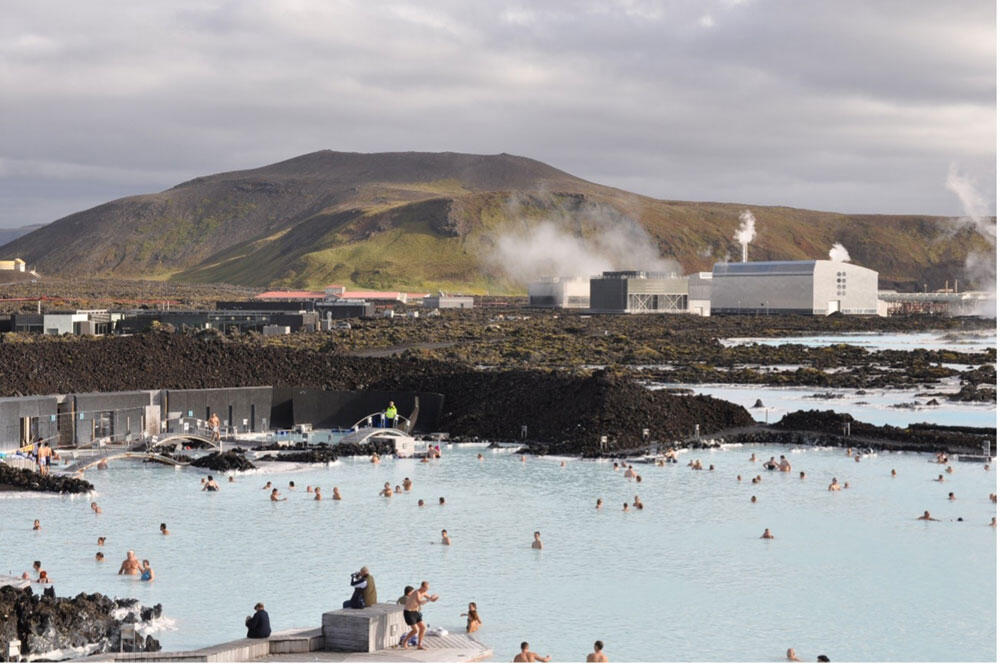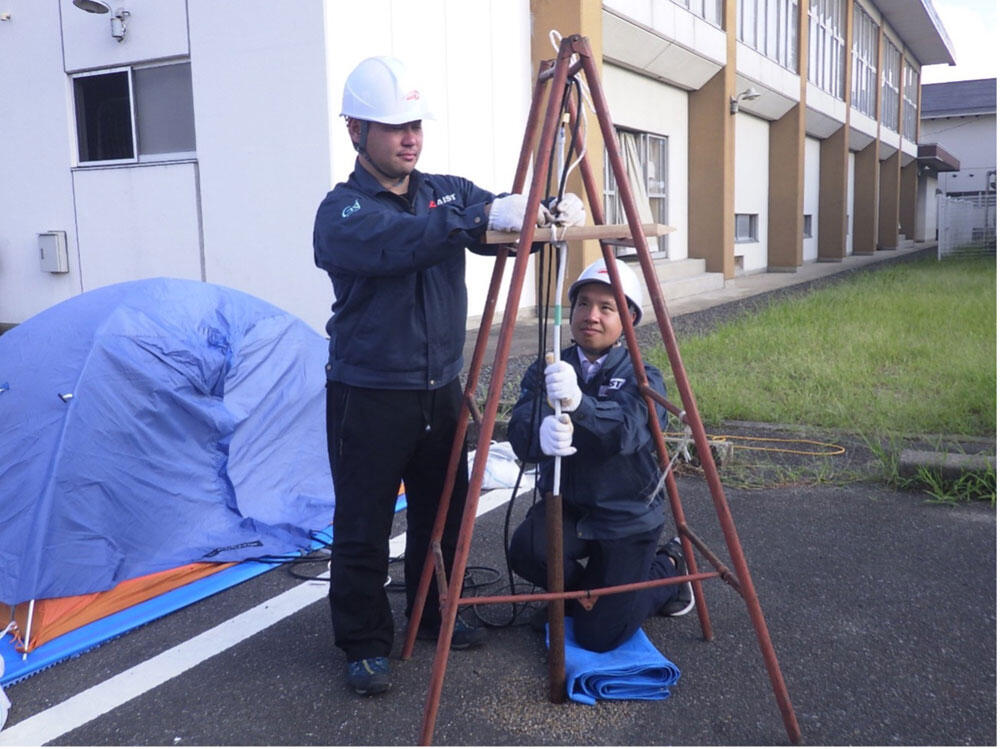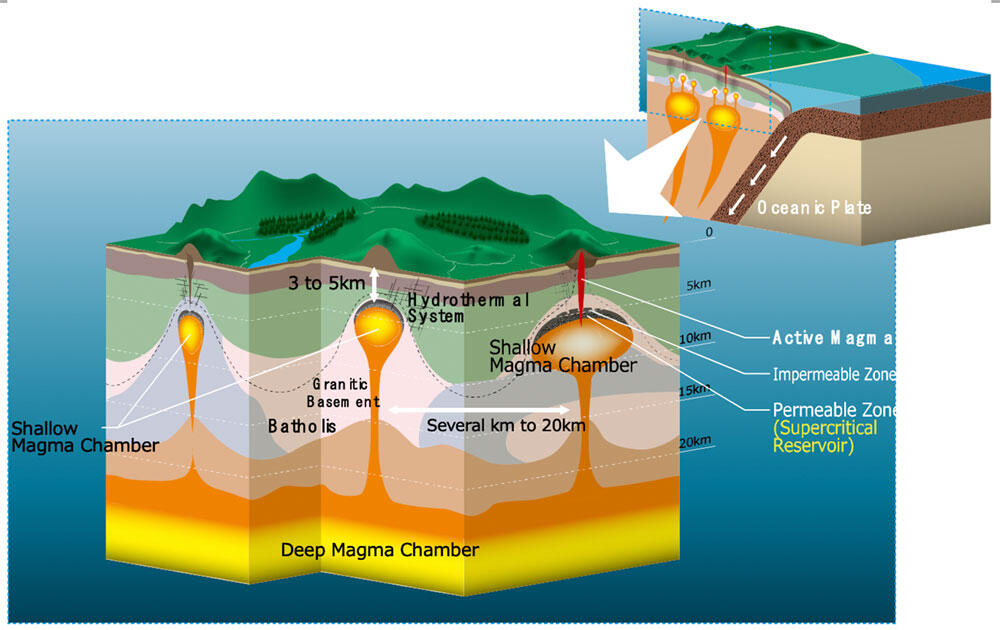Utilization of Geothermal and Shallow Geothermal Energy
-Proper Utilization of the Energy Beneath Us-
Last Updated: April 13, 2021
Making the best use of the world’s third-largest resources
Japan is one of the most active volcanic countries and is reported to have third-largest hydrothermal geothermal resources in the world. The Geothermal Energy Team (GET) in the Renewable Energy Research Center (RENRC) conducts a series of research and technology development aimed at drastic increase of geothermal power generation in future. Current research topics in GET includes development of supercritical geothermal resources, super-resolution monitoring of hydrothermal reservoirs to reduce the risks and costs of geothermal development, development of Engineered Geothermal Systems (EGS) technologies for sustainable energy production, development of monitoring system of hot springs using AI and IoT technologies, and construction of an advanced database of geothermal resources. In addition to the scientific/engineering studies, GET conducts the research on hot springs and geothermal exploitation systems suitable for different socio-economic conditions.
Development of the method to evaluate subsurface thermal property –for the promotion of ground source heat pump systems-
Ground source heat pump (GSHP) systems can be used almost everywhere in the nation because they utilize the temperature difference between the atmosphere and shallow subsurface (50 - 100 m depth). The Shallow Geothermal and Hydrogeology Team (SGHT), RENRC conducts the research aimed at promoting the dissemination of this energy-saving system.
To make the best use of GSHP systems, it is important to develop a system design most suitable for the geology and groundwater conditions of each area. Currently, SGHT is conducting demonstrations of a new thermal response test to evaluate subsurface thermal property (apparent thermal conductivity), which is essential for the system design, in collaboration with the Association of Ground Source Thermal Energy Utilization in Fukushima Prefecture. Based on the result, SGHT is preparing a distribution map of apparent thermal conductivities within the Fukushima Prefecture. SGHT plans to standardize this test aiming at widespread use of the system throughout Japan.
Coexistence of geothermal power generation and hot spring
Performance prediction test of GSHP system
Conceptual model of “supercritical geothermal system”, which has its origin in subduction of an oceanic plate. It is expected that the supercritical geothermal system has a potential to drastically increase geothermal power generation in future.




